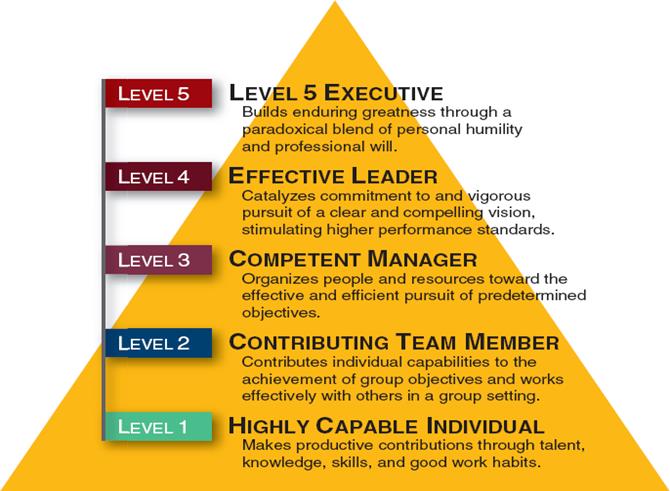Succession Part 2: Transitioning to Tomorrow’s Leaders
 As noted in our previous post Succession Part 1: Holding onto Clients When Senior Rainmakers Retire, over the next ten years over 65% of baby-boomer, equity partners are expected to retire. (Since we focused on Transitioning Clients in that post, we will not address it again in this one.) Many of these partners likely also are rainmakers, strategic advisers both within the firm and with clients, have deep practice knowledge and likely serve in a management capacity in their firms. As retirement looms ahead, firms need to develop effective transition strategies for next generation of leadership.
As noted in our previous post Succession Part 1: Holding onto Clients When Senior Rainmakers Retire, over the next ten years over 65% of baby-boomer, equity partners are expected to retire. (Since we focused on Transitioning Clients in that post, we will not address it again in this one.) Many of these partners likely also are rainmakers, strategic advisers both within the firm and with clients, have deep practice knowledge and likely serve in a management capacity in their firms. As retirement looms ahead, firms need to develop effective transition strategies for next generation of leadership.
According to Jim Collins in Built to Last: Successful Habits of Visionary Companies, “One of the distinguishing characteristics of great, enduring organizations is that they put a lot of thought into development of leadership.” Many law firms now recognize that their future leaders need education, on-the-job training, mentoring and some relief from billable/revenue standards, and that the most successful firms are investing in building the infrastructure to identify and develop next generation leaders.
In his research on leadership of successful companies, Jim Collins identified Five Levels of Leadership, noting that those at Level Five shared common traits that contributed to their respective companies’ great success. These Level 5 leaders consistently identify excellent successors because they are more focused on wanting their companies to be even more successful in the next generation than they are in their own agendas or ambitions. He notes that by contrast, “Level 4 Leaders often fail to set up the company for enduring success – after all, what better testament to your own personal greatness that the place falls apart after you leave?”

Qualities of A Level 5 Leader:
- Modest, shuns public adulation, never boastful
- Quiet, calm determination; resolved to whatever must be done for long-term results.
- Channels ambition into company, not self. Sets up successors for even more greatness.
- Apportions responsibility for poor results to self; attributes credit good results to others or to good luck.
Many law firms have a lot of Level 3 and Level 4 leaders, but how many have truly achieved Level 5? Obviously, seniority and longevity alone do not guarantee exceptional leadership which means that those nearing retirement may or may not have the traits of Level 5 leaders. It certainly is easier (though still not easy) to find partners who are effective managers, but as noted by Herbert Greenberg, PhD, founder and CEO of Caliper, “Pure managers make the system work but leaders make things happen.”
10 Steps Firms Can Take to Structure an Effective Leadership Succession Program
1. Identify the most critical leadership roles needed for the future. Dramatic changes in the economy, globalization and the need to focus on new ways of approaching the delivery of legal services and the traditional law firm model necessitate that most firms take a fresh look at leadership needs. Future leaders will require additional or alternative skills than those of past leaders. Reflecting on their strategic plan and priorities, firms should develop profiles of key leadership and management roles and skills.
2. Identify the traits you seek in your future/high potential leaders. Different leadership roles may require different skills, although there will be a baseline set of qualities all leaders must have. Ideally, your future leaders will include most of the qualities of Level 1 through 5 Leaders above. Additional qualities and considerations were included in our blog post How Can We Help Practice Group Leaders to be Successful. In addition to those noted above, future leaders will have or be:
- Integrity and trustworthiness
- Visionary and innovative
- Ability to inspire, motivate and generate buy-in to vision
- Curiosity and eagerness to lead
- A positive impact on others
- High emotional intelligence (self-awareness, self-regulation, motivation, empathy and social skill.)
- Assertiveness
- Ego drive (the desire to persuade)
- Ego strength (resilience to bounce back and to help others to deal with rejection or failure)
3. Define the job/role and devise a core competency framework. Each leadership role should have a well-defined job description. The skills and responsibilities likely will vary so these should be identified and clearly articulated. Job descriptions should be prepared and attendant core competencies delineated for firm managing partner/CEO, office managing partner, practice group leaders, industry group leaders, client team leaders and important committee leaders, e.g., finance, strategic planning, compensation, talent management (recruiting, training, performance,) business development and marketing, etc.
4. Recognize high potential candidates early. Leadership traits should become an important segment of early performance reviews and skills assessments. Firms often bemoan the dearth of leadership talent in their ranks – but many of their lawyers still have advanced into the partnership despite not having the leadership qualities. Why haven’t these firms put a premium on leadership talent sooner, as early as the recruitment process and certainly by their third to fifth year in practice?
5. Beware the “in my own image” or the top rainmaker trap. Many senior partners of firms fall into the trap of identifying future leaders on the basis of their own traits and success path. This inevitably leaves out many of the best future leaders – women and other diverse lawyers. (This tendency also is true and should be considered when looking for client relationship successors.) Firms also often promote the largest rainmakers into positions of leadership regardless of leadership skill. This may be done at the rainmaker’s insistence either out of desire for control or recognition. While it may be difficult to resist these demands, top revenue generating partners do not always have the time or the acumen to lead effectively.
6. Start training/grooming your high potential leaders early, as much as 2-8 years in advance. Firms that are doing this well are transparent about their leadership transitions, especially at the managing partner level. Often they will appoint the successor as the Assistant MP or Deputy MP two or three years in advance to allow for ample time for mentoring and seamless transition. When looking for future leaders beyond the top spot, large firms will have to identify as many as 20-30 high potential leaders at a time given the large number of important leadership roles in the firms. This is even more reason why high potential candidates should be identified and groomed even as mid-level associates.
7. Provide training and resources. A number of firms send their future leaders to external workshops run by Harvard Business School, Harvard Law School, the Wharton School of Business, Georgetown Law Center, George Washington and countless others. Still other firms have designed their own internal programs supplemented with internal sponsors and mentors and external executive coaches. We strongly recommend quarterly calls and at least b-annual retreats dedicated to those in leadership to share challenges and best practices. In addition to our own firm, there are a number of talented consultants who offer coaching, resources and tools to help new leaders. One of the best in the field is Patrick McKenna who authored “First 100 Days – Transitioning a New Managing Partner”.
8. Provide good training ground. Future managing partners and other key firm leaders can learn a lot about leading and managing by serving as office heads, practice group leaders, industry group leaders, client service team leaders and by serving on and then leading key committees. Put young partners onto committees early, even as non-equity partners, perhaps even as senior associates who are on track. Just as rainmakers are not born overnight when awarded the title of partnership, neither are leaders. Be sure to institute effective formal performance evaluation and feedback for your leaders including 360 reviews to allow for improvement and alignment.
9. Give new leaders the authority and space they need. If ample time and tenure has been afforded future leaders, they should find the transition relatively smooth into leadership roles. But for the managing partner role in particular, this can be a difficult transition for both the leader handing over the reigns as well as the successor. Many recommend a hiatus for the former managing partner to perhaps even physically leave the firm for a while, e.g., take a sabbatical, or at least refrain from being involved in day to day management for a period of time. This allows the successor to set her/his tone and agenda and prevents the former leader from feeling obligated or tempted to weigh in or interfere.
10. Keep former leaders engaged and access them as the valuable assets they are. Leaders that are transitioning out have invaluiable perspective, knowlledge, leadership epxerience and institutional memory. Former leaders who are nearing retirement can still be uses as leadership mentors and sponsors. Others may provide value serving as general counsel, substantive training, client development training and in pro bono or corporate social responsibility initiatives. As more firms put younger partners into key leadership roles, there will also be a need to support those partners as they re-enter their practice, re-engage with former or new clients, and continue to mentor new leaders.
Our next blog will feature a case study of Bingham, a firm that has devoted time and resources and developed an extensive leadership program.

